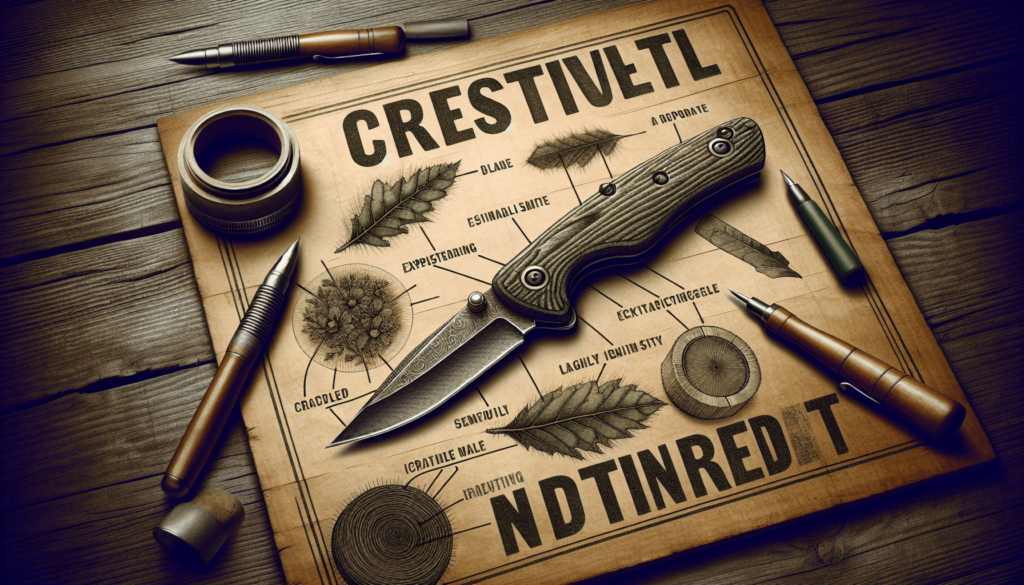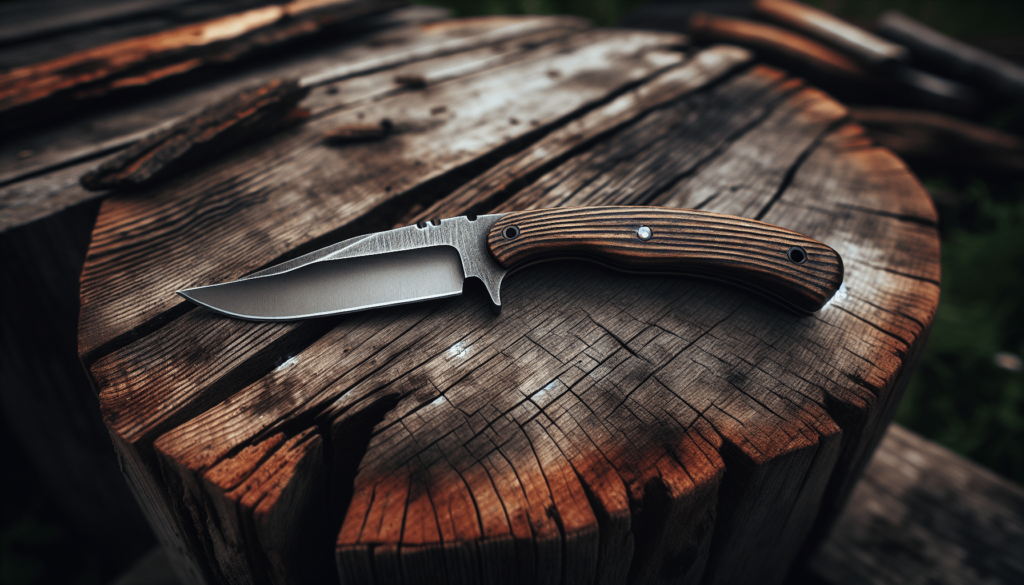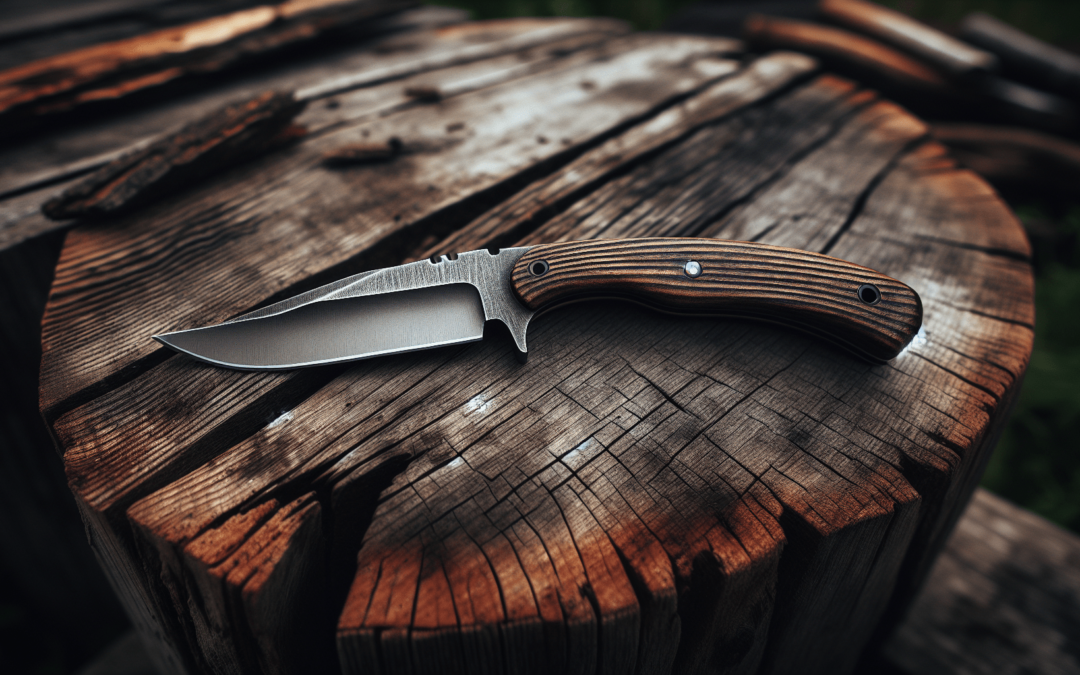Step into the world of bushcrafting with ease as you embark on the rewarding journey of crafting your very own simple bushcraft knife. In this article, you’ll discover the essential materials and straightforward techniques needed to turn raw components into a functional, reliable tool. From selecting the right steel to mastering the art of shaping and sharpening, each step is broken down to ensure your success, even if you’re new to knife-making. Embrace the blend of creativity and practicality, and feel the satisfaction that comes with using a tool crafted by your own hands. Have you ever found yourself in the great outdoors, wishing you had the perfect knife for carving, cutting, and all your bushcraft needs? Whether you’re an outdoor enthusiast, survivalist, or just looking to pick up a new skill, crafting a simple bushcraft knife can be incredibly rewarding and practical. Not only will you have a tool specifically tailored to your needs, but you’ll also gain immense satisfaction from using something you created with your own hands.

Understanding the Basics of Bushcraft Knives
Let’s first discuss what makes a bushcraft knife different from other knives. A bushcraft knife is specifically designed for tasks encountered in the wilderness, such as carving wood, cutting rope, preparing food, and other survival activities. These knives are typically characterized by their durability, versatility, and ease of use.
Characteristics of a Good Bushcraft Knife
A good bushcraft knife should meet certain criteria to be effective and reliable in various situations. Here are some of the key attributes:
- Blade Material: High-carbon steel or stainless steel are commonly used for durability and ease of sharpening.
- Blade Shape: A drop point or spear point can offer better control and versatility.
- Blade Length: Typically, a blade length between 3 to 6 inches is ideal for bushcraft tasks.
- Full Tang: A full tang provides better strength and durability since the blade extends through the handle.
- Comfortable Handle: Ergonomically designed handles, often made of materials like wood or Micarta, ensure a firm grip.
| Attribute | Description |
|---|---|
| Blade Material | High-carbon steel or stainless steel |
| Blade Shape | Drop point or spear point |
| Blade Length | 3 to 6 inches |
| Full Tang | Extends through the handle for added strength |
| Handle Material | Comfortable materials like wood or Micarta |
Why Craft Your Own Bushcraft Knife?
Crafting your own bushcraft knife offers numerous benefits. First, it allows you to customize the knife to your specific needs and preferences. Second, you’ll gain a deeper understanding of knife construction, which can be valuable knowledge in the field. Lastly, it’s an enjoyable and fulfilling endeavor that can become a cherished pastime.
Materials and Tools You’ll Need
Before you begin, gather all the necessary materials and tools. Consider this the foundation of your project.
Materials
- High-Carbon Steel: A flat piece suitable for your blade size.
- Handle Material: Wood, Micarta, or G-10 are great choices.
- Pins: Brass or stainless steel pins to secure the handle.
- Epoxy: Strong adhesive to bond the handle to the tang.
Tools
- Metal Saw: For cutting the steel to shape.
- Grinder: For shaping and refining the blade.
- Files: To fine-tune the blade edges.
- Sandpaper: Various grits for polishing the blade and handle.
- Drill: To create holes for the handle pins.
- Clamps: To hold pieces in place during assembly.
| Materials | Tools |
|---|---|
| High-Carbon Steel | Metal Saw |
| Handle Material | Grinder |
| Pins | Files |
| Epoxy | Sandpaper |
| Drill | |
| Clamps |
Designing Your Knife
Choosing a Blade Design
Designing your knife requires some thought about its intended use. A drop point blade is great for general bushcraft tasks, while a clip point blade can be more effective for detailed work. Sketch your design on paper, considering the blade length, handle size, and overall balance.
Creating a Template
Once you’re satisfied with your design, create a template using cardboard or a thin piece of wood. This physical template will help you visualize the knife and serve as a guide when cutting the steel.
Shaping the Blade
Cutting the Steel
Using your template, trace the knife shape onto the high-carbon steel. Carefully cut out the rough shape with a metal saw. Take your time to ensure accurate cuts.
Grinding the Blade
With a grinder, begin shaping the blade. This involves creating the bevels and refining the edges. A common bevel angle for a bushcraft knife is 20 degrees, but you might want to adjust this based on your specific needs.
Filing and Sanding
After grinding, use files to further refine the blade’s shape and edges. Follow up with sandpaper, graduating from coarse to fine grits. This will smooth out any rough areas and prepare the blade for heat treatment.

Heat Treating the Blade
Heat treating is a crucial step to harden the blade and enhance its durability.
Heating the Blade
Using a forge or a blowtorch, heat the blade evenly to a cherry-red color, approximately 1,500 degrees Fahrenheit. Ensure you wear appropriate protective gear.
Quenching
After reaching the desired temperature, quickly quench the blade in oil. This rapid cooling process hardens the steel. Be cautious as the oil can ignite; perform this step in a well-ventilated area away from flammable materials.
Tempering
Tempering reduces brittleness and improves the blade’s flexibility. Place the quenched blade in an oven at around 400 degrees Fahrenheit for two hours. Allow it to cool gradually.
Adding the Handle
Choosing the right handle material and design can significantly impact the knife’s usability and comfort.
Preparing the Handle Scales
Cut the handle material into two scales, matching the size of the tang. Drill holes for the pins, ensuring they align perfectly with the tang’s holes.
Attaching the Handle
Apply epoxy to the tang and place the scales on either side. Insert the pins through the drilled holes and clamp the assembly tightly until the epoxy cures. This usually takes a few hours to overnight.
Shaping and Finishing the Handle
Once the epoxy is fully cured, use files and sandpaper to shape the handle. Aim for an ergonomic design that fits comfortably in your hand. Finish with fine-grit sandpaper for a smooth surface and apply linseed oil or wood finish for added protection and aesthetic appeal.
Final Sharpening
Now that your knife is assembled, it’s time to give it a final sharpening. Use a sharpening stone or an appropriate sharpening system to achieve a razor-sharp edge. Test the sharpness by slicing through a piece of paper or shaving a small piece of wood.
Testing and Maintenance
Field Testing
Before taking your knife on a serious adventure, test it in various tasks. Carve wood, cut rope, and perform other bushcraft activities to ensure it’s reliable and comfortable to use.
Maintenance Tips
Regular maintenance will keep your knife in top shape:
- Cleaning: Wipe the blade clean after each use and oil it to prevent rust.
- Sharpening: Keep the edge sharp with regular honing, and occasionally re-sharpen it as needed.
- Storage: Store your knife in a sheath when not in use to protect the blade and yourself.
Customizing Your Knife
Once you’ve mastered the basics, consider adding custom touches to make your bushcraft knife truly unique. Some ideas include:
- Engraving: Add personal engravings or designs to the blade or handle.
- Handle Materials: Experiment with different types of wood, micarta, or composite materials.
- Blade Finishes: Apply various finishes, such as stonewashing or patina, for a distinctive look.
Connecting with the Bushcraft Community
Sharing your journey and connecting with others can offer valuable insights and inspiration. Join online forums, attend workshops, and participate in local bushcraft events to exchange knowledge and showcase your creation.
Recommended Online Communities
Here are a few popular online communities where you can connect with other bushcraft enthusiasts:
| Community | Description |
|---|---|
| Bushcraft USA | A comprehensive forum covering all things bushcraft |
| Reddit r/Bushcraft | A subreddit dedicated to bushcraft and survival skills |
| BladeForums | A forum focusing on knife making and customization |
Conclusion
Crafting a simple bushcraft knife is a blend of skill, patience, and creativity. From selecting the right materials to shaping and finishing the blade, each step in the process is an opportunity to learn and grow. The end result is not just a functional tool, but a piece of craftsmanship that carries your personal touch.
By investing time and effort into making your own bushcraft knife, you’re not just preparing for outdoor adventures—you’re also gaining a greater appreciation for the tools that aid us in survival and everyday tasks. So, why not give it a try? You may find that the process is just as rewarding as the final product.
Happy crafting, and may your new bushcraft knife serve you well on all your adventures!

